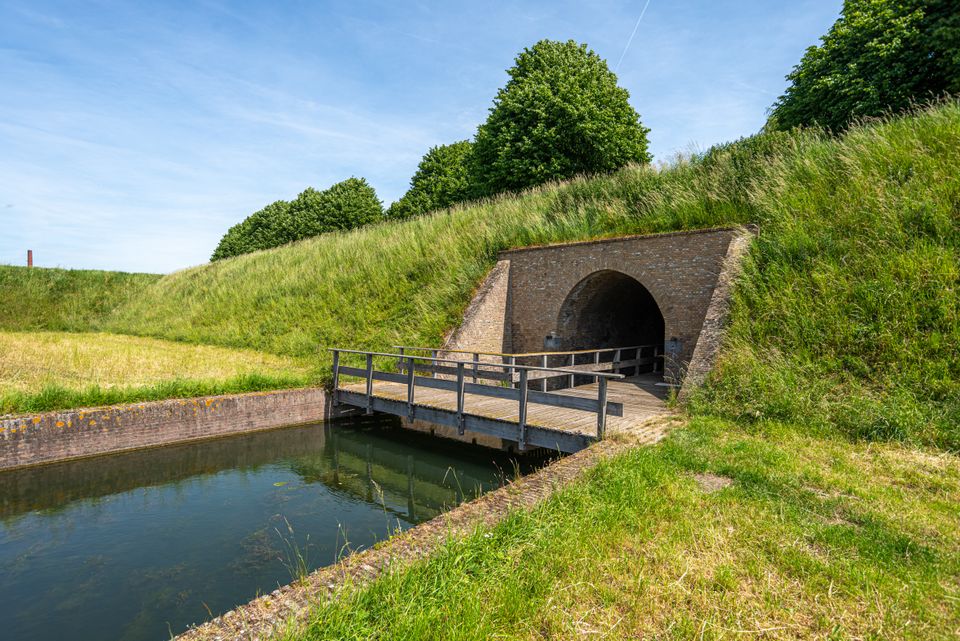Bromsluis Heusden Vesting
This structure, dating from the early 17th century, is part of Heusden's fortifications. The Bromsluis functioned as a strategic point for a counterattack from the fortified town, so it served as a "sortie": a tunnel under the defensive rampart. A secret passage allowed the defenders, despite the deep moat, to leave the fortress in the event of an enemy attack. In this way, they reached a ravelin under cover. If necessary, they could also block the exit with a fence.
Today, the Humming Lock functions as a drainage sluice....
This structure, dating from the early 17th century, is part of Heusden's fortifications. The Bromsluis functioned as a strategic point for a counterattack from the fortified town, so it served as a "sortie": a tunnel under the defensive rampart. A secret passage allowed the defenders, despite the deep moat, to leave the fortress in the event of an enemy attack. In this way, they reached a ravelin under cover. If necessary, they could also block the exit with a fence.
Today, the Bromsluis functions as a drainage sluice for the Demer Canal in the city. This forms a beautiful connection between two worlds: that of the attractive fortified town and that of the green landscapes behind the ramparts. The fortifications and city itself underwent a thorough restoration starting in 1968. The restoration of this cultural heritage was based on Blaeu's map of 1649 and resulted in the highest European restoration award 'Europa Nostra' in 1980. The Bromsluis has been fully restored since 2014.
